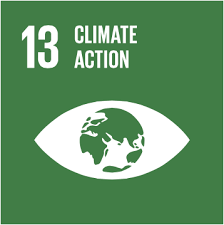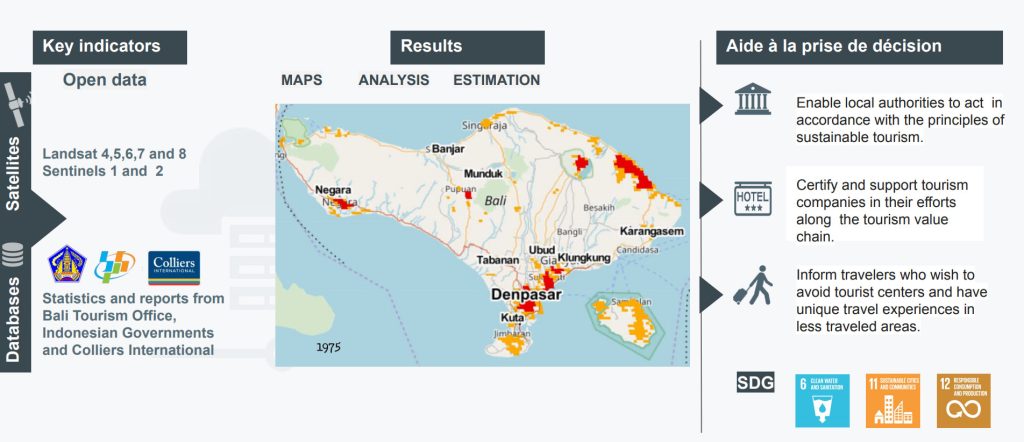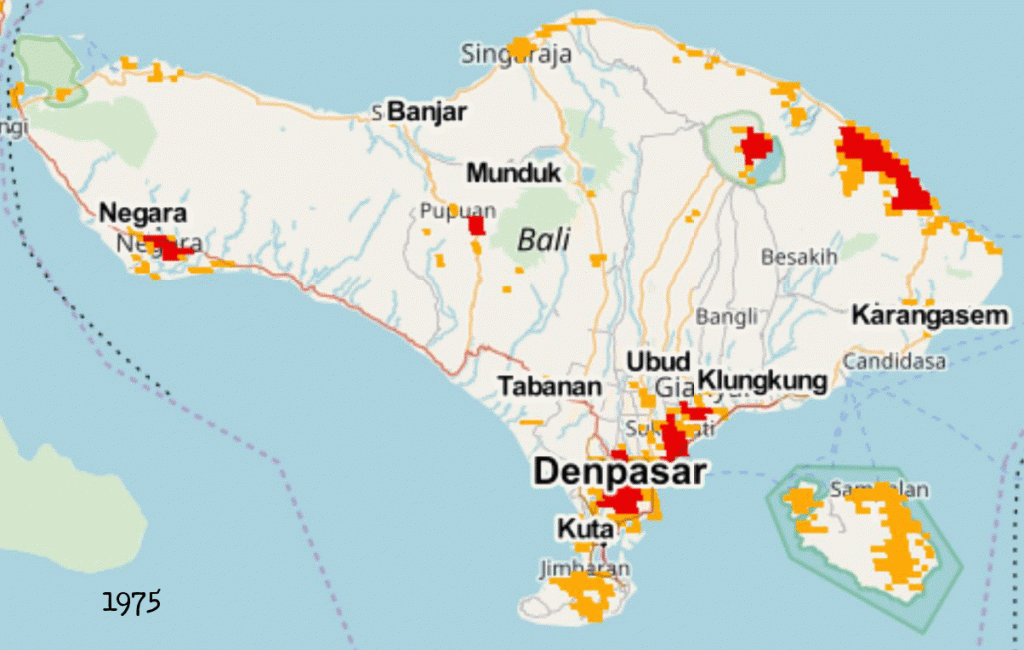The term “Murmuration” describes the phenomenon by which starlings gather spontaneously in the air to face a predator. Faced with the exponential growth of mass tourism and its negative effects on the environment, MURMURATION SAS’s approach is similar: to create an ecosystem of engaged actors from the tourist sector to quantify the environmental pressure on popular destinations and to limit its impacts in the context of climate change. It aims to create better conditions for the development of a sustainable tourism!
October 2018, the Philippines reopen Boracay, a paradise island previously soiled by mass tourism. December 2018, the famous Thai island Koh Phi Phi lacks water because of the number of tourists. April 2019, Dubrovnik tries to manage the overtourism. June 2019, deaths on the slopes of Everest increase because of overtourism …
Many stories like those ones demonstrate the effects of mass tourism. Over-frequentation? Bad tourism management? In any case, prevention is better than cure. While tourism accounts for 8% of global greenhouse gas emissions (according to the Allenvi 2019 study), it is also a socio-economic catalyst and a factor in preserving the environment through the development of new trends such as sustainable tourism.

All the stakeholders have to help safeguard the places that make us dream during our travels. Tourists, tourism professionals, local authorities, associations and NGOs, governments, … All must collaborate so that the tourism activity can be a real promise of economic and social development, while preserving biodiversity and local life in a sustainable way.
Study case : Bali, a tourism booming. How to deal with environmental pressure?
This inclusive approach is possible thanks to satellite data. Combined with various data from local authorities or even the tourists (eg tourism statistics), this innovative solution aims to set up environmental pressure indicators on a global scale. Indeed, the observation of a dedicated area thanks to high-resolution satellite data allows to give reliable and transparent indicators. The satellite data are factual and invaluable because they allow to go back in time, to identify the problems but also the solutions and to foresee future evolutions.
Copyright image : rawpixel de Pixabay
Satellites offer us an incomparable view of our planet thanks to spatial data
(more…)The #SDGsTourismTalks build on the strategic recommendations of the Baseline Report on the Integration of Sustainable Consumption and Production in Tourism Policies and provide Member States with an opportunity to disseminate their efforts and commitment to develop sound tourism policies and ensure their effective implementation.


In the Sustainable Tourism Policy Talks Ministers of Tourism shared their vision on the implementation of tourism policies and the contribution of the tourism sector in order to achieve SDG 12 goals on sustainable consumption and production and other connected SDGs.
You can’t manage what you can’t measure!
5 main indicators are outlined and they are related also to the climate action SDG13 :
– Biodiversity conservation
– Energy use efficiency
– GHG emissions reduction
– Waste reduction
– Water use efficiency
To know more about the report on sustainable tourism : UNWTO efficiency resources in tourism
What is essential in your growth strategy and sustainable development? Spatial data
(more…)The attractiveness of natural and touristic areas with a rich biodiversity is a major concern in the definition of sustainable management of tourist areas. These natural areas are much more sensitive to the tourist pressure induced by the increasing number of roads, an increasing urbanization and a growing number of travelers to host, guide, restore, etc. Natural ecosystems are the first victims of overcrowding in areas that were previously difficult to access. Excessive crossing on natural paths causes significant damage to vegetation, soil and water quality. The local populations are faced with financial issues such that for most of them, they leave their craft and agricultural activities and they devote themselves totally to the tourism activity, becoming totally dependant on it.
It is the responsibility of all actors to help safeguard naturals and touristic areas : tourists, tourism professionals, local officials, associations and NGOs. Everyone must work together to put in place environmental management that is conducive to both the economic and social development of these residents. Tourism activity can be a real promise of economic and social development, while preserving biodiversity in a sustainable way. Travel, within the framework of a sustainable tourism, is an encounter with a country and the complexity of its history, its cultures, its cults, its biodiversity, its ecosystems, it’s about Life and Earth.
Our emerging collaboration with Julien Leroy, founder of Terra Nordeste, is inscribed in this context. Julien describes his activity as a “craftsman of the journey”, he furrowed for almost 15 years the most beautiful natural places of Brazil. He literally fell in love with this country. He describes those places as of a wild and catchy beauty, but they are also very fragile and threatened: “I try to propose the most authentic and the most respectful trip possible of the country. I will soon collaborate with the Toulouse company “Murmuration”. It will provide me with satellite data so that I can visualize the impact of tourism in the regions where I work. It will allow me to act accordingly. ” Interview with Julien Leroy, Founder of Terra Nordeste.
Some solutions exist, one of them is to integrate satellite data into a collaborative approach to observe a dedicated area based on reliable data and difficult to contradict. The satellite allow us to go back in time, identify problems but also solutions and predict future developments. They are valuable and factual.
Copyright credit illustration ESA
Going a few thousand miles and sipping fresh fruit juices in an exotic setting and on a hot, humid afternoon is no longer the preserve of just a few elites. The trip is democratized, it allows a greater openness to the world, to meet the other, change his habits, discover new places, admire the diverse nature around the world. The unparalleled pleasure of facing beautiful landscapes unfortunately and often has a negative impact on the environment. Several initiatives are being implemented at various scales: ecotourism, outdoors, river tourism, bicycle tourism, sustainable tourism.
We wanted to answer the following question: How to understand our impact and help reduce it?
In this case study, we will demonstrate how to quantify its impact in order to implement the necessary measures at the scale of a tourist region : Bali, an Indonesian island famous for its wooded volcanic mountains, rice paddies, beaches and coral reefs.

Speaking at German trade show ITB in Berlin Dr. Stroma Cole, director of Equality in Tourism highlighted that it is the sustainable management of water that will be the major vector of driving tourism in the coming years. She also mentioned that Bali will be facing a critical point at 2020 concerning the water supply and demand. This conclusion is based on the findings of several monitoring organisations, for example the Bali Hotel Association (BHA) and Howarth HTL where they report that the assumed per capita daily use of fresh water is of 183 liters, whereas for a 2 stars hotel the consumption is of 1000 liters. Knowing that lots of hotels are 2+ stars in Bali, the water consumption ratio is likely to be more than 1 to 5. For statistics concerning the number of hotels and their ratings please refer to this document.
We started to look for the available open and free data to see if this makes any sense at all.
The first dataset We looked for was statistics on the number of travellers flying to Bali to see how these fluctuated over the past decade. I found an open dataset (here) coming from the Indonesian government that showed a continuous increase in the number of tourists climbing from 2 millions to approximately 11 million visiting tourists in 2014. Moreover the data showed the number of tourists who checked-in the different attraction over the beautiful island.
The most visited region of Bali in 2014 was the south west region of Tabanan that accounts for about 40% of all tourists.

The following map shows the relative weight of each region in the constant growth of tourists.

As you can see, the region that have seen a significant increase in the number of tourists is the region situated at the south and center of the island. The sandy beaches of Kuta, the temple of Tanah Lot are major attractions in Bali. One may think that given the small size of the island, tourists have the choice of staying in the north or the center for example and visit these areas on day tours. This would mean that the increase of residential areas in these regions can be reasonable to avoid putting major stress on the infrastructures through the creation of hotels for example. Trying to identify patterns of growth of residential areas is something that earth observation data by satellites does great thanks to the global coverage and the diversity of sensors.
The European Commission’s Joint research center (JRC) has deployed significant effort to map built-up areas across the planet. The result of this effort are an open source, open tools, map layers that are available here. So I thought, perfect, let’s use this to see how the urban areas evolved over Bali over time. The results, shown in the following map, that show the evolution from 1975 to 2015, seem to be inline with the tourism influx shown in the previous map. Yeah, one of the advantages of using satellite imagery is that we can go back in time to do spatial analysis.

The million dollar question now is whether this increase in residential areas is only related to an increase in the number of tourists accommodation areas or whether they are related to normal increase in population. According to the official reports of the Indonesian government (here), the population in Bali has almost doubled in the period from 1971 to 2010, rising from 2.1 Million to 3.8 million persons (circa 1.1% growth rate over the last decade).
While this population growth may help explain the increase in population in the dense urban centers (the red points in the previous map), it does not explain the increase in the low density urban clusters (shown by the green areas on the map). Another indicator is the sheer increase in the number of hotels in Bali over the past decade. Indeed, according to the market analysis report issued by Colliers international (here), the number of hotels, budget and luxury hotels combined, has almost doubled over the period from 2005 to 2015. This seems to be inline with the continuous increase in the number of tourists coming to Bali.
Factually speaking, the earth observation data show that there is a construction pressure, the stats show there is a significant increase in tourist influx and that there might be correlations with the number of hotels as the number of hotels being built-up is in continuous increase. This gives food for thought, first on how available data might be used to indicate certain trends in pressure on available resources.
The objective of these reflexion is not to refrain you from going to your favourite vacation spot, but to think about the possible impact. Maybe one of the solutions would be to avoid touristy centers and stay in a non-traditional places, beside being sure to have unique experiences, you also avoid putting the pressure on resources on critical areas.

A concrete example would be for example to stay at the west or north of Bali where there is less pressure on water consumption rather than staying in the south. You will still be able to visit your favourite spots over a day trip and you will enjoy less crowd and more personalized experiences.
If tourism is responsible for 8% of global greenhouse gas emissions, it is also a factor in preserving the environment through the development of new trends such as sustainable tourism.
The exponential growth of tourism activities and the emergence of the world’s middle class are exerting considerable environmental pressure on the most popular destinations. The assessment of this environmental pressure is generally of interest to travelers and decision-makers. However, despite its obvious importance for all stakeholders, environmental information is not available and therefore not a decisive factor when choosing a destination. This is mainly due to the difficulty of evaluating the impact of tourism activity, excluding transport. Knowing that tourism accounts for 10% of global GDP, the development of environmental indicators indexed to tourism activity is of paramount importance. The provision of this information at the global, regional and local levels is of utmost importance for sustainable environmental and economic activity.
Our proposal aims to develop a service providing this information: measuring and monitoring the environmental pressures due to tourism activities and transmitting them to all stakeholders.
For the first time in France, tourism and space companies are coming together to present innovations at the crossroads of these two worlds. For two days participants will explore the contribution of space to the benefit of tourism innovation through several highlights … Round Tables Big Data, spatial data, artificial intelligence … what potential for tourism?
We ‘re glad this meetings take place and we invite you to participate it. The MURMURATION SAS team will be there too!